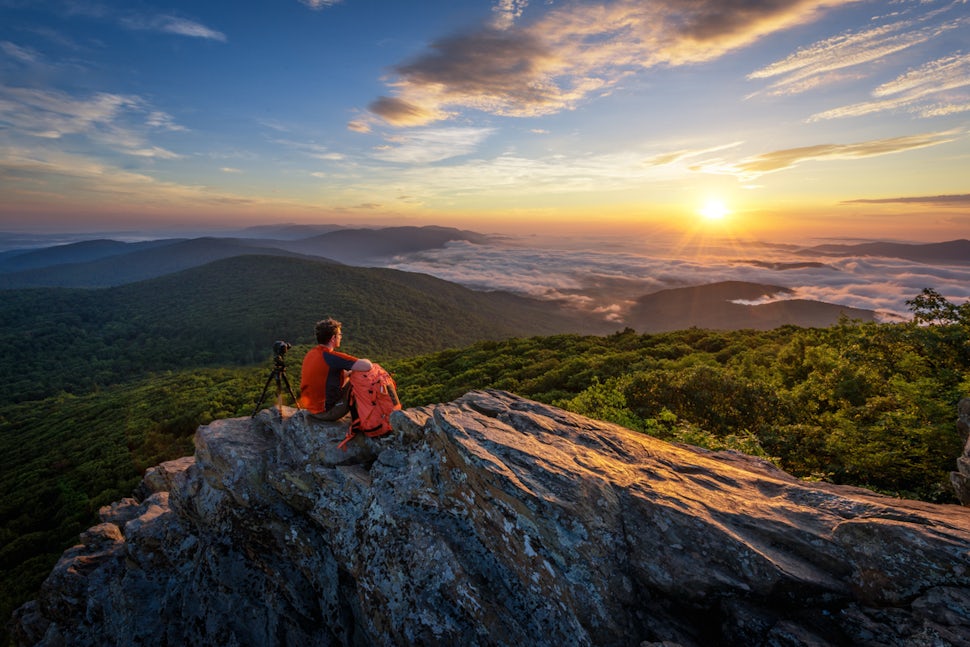7 Essential Non-Photography Items to Always Have in Your Pack
As an Eagle Scout, I try to always be prepared. Whenever I go on any photography adventures, whether it’s just to photograph a sunrise or two weeks in the backcountry, I always have these seven essential non-photography items in my bag.

1. Multi-Tool
I don’t know how many times I’ve needed to use a knife or screwdriver while out and about. Multi-tools are great to have because sooner or later something is going to break, and it’s always good to have one in your bag for those McGuyver-type repairs. I currently use a Sog EOD Powerlock but have used Leathermans in the past and love both brands.
2. Head Lamp/ Flashlight
The best light for landscape photography is usually at sunrise or sunset. This means you have to hike to or from your location in the dark. I use a Black Diamond headlamp and love it because it’s small and lightweight and easily fits into my bag. Make sure you get one with a red light; that way if you plan to do any night photography the red light will not ruin your night vision. I also use my head lamp to help me focus my lens in low-light conditions. I shine my head lamp on my subject, focus my lens, lock my focus and then turn off my light before taking my picture. I have also used my head lamp to light paint some foreground elements during a night time shoot.
3. Smart Phone
OK, technically a smart phone is a camera, but let’s talk about the other features, most importantly the ability to call for help if needed (if you have service). If you get into trouble and have cell service, your phone could save your life. I also use my phone to check the weather, sun and moon rise and set times, the position of the sun, moon, and Milky Way at any given time of the day, a clock for long exposures, etc. Some of my favorite photography apps that I use all of the time are the Photographer's Ephemeris, Sun Seeker, Windy (weather app), and PhotoPills. All of these apps help make sure I’m in the right place at the right time to capture beautiful landscapes.
4. Compass
This is a must have in case you get lost, but having one in your bag will do you no good if you do not know how to use it. Sometimes in search for the best composition, you may have to leave the trail or scramble over rocks. After photographing for a few hours things may no longer look the same as when you left the trail (because the sun is now up or has just set). A compass can aid you in finding the trial to make sure you get home safe and sound. I also use my compass to help determine where the sun will rise and set and during the summer where the Milky Way will rise and set.
5. First Aid Kit
Like a compass, this is a must-have in your camera bag. Hopefully, you will never have to use it, but chances are if you spend enough time in the wilderness you’re going to get some bumps and scrapes. You never know when you or a friend might need a Band-Aid or you might need tweezers to pull some thorns out of your skin.
6. Whistle
A whistle is another “I hope I never have to use this” item that I always have in my bag. A whistle is much louder than your voice and will travel further if you need help. Some bags have built in whistles, which is better than nothing, but I prefer to carry a Fox 40 whistle in my bag. The Fox 40 whistle is waterproof so even if it's a downpour, or I fall into a river, it will still work when I need it. Remember: the universal distress code is S.O.S. which is performed by three short blasts, three long blasts, and then three short blasts.
7. Water and Snacks
Having water and snacks is a must. After hiking to your location, it’s important to rehydrate and eat something. Photographers sit around a location for hours waiting for the perfect light, and if you are hungry or thirsty, it may force you to leave early and miss a beautiful sunset. In addition to water, I always have a few snacks in my bag to munch on while I’m enjoying the view waiting for the perfect light. One of my go-to snacks is trail mix (without raisins), but currently some of my favorite snacks are from Trail Foody, which always has some very tasty snacks in their snack bags. You might also consider carrying a LifeStraw (another item I hope I never have to use) with you just in case you run out of water and only have potentially contaminated water sources; this item filters the water so that it is safe to consume.
We want to acknowledge and thank the past, present, and future generations of all Native Nations and Indigenous Peoples whose ancestral lands we travel, explore, and play on. Always practice Leave No Trace ethics on your adventures and follow local regulations. Please explore responsibly!
Do you love the outdoors?
Yep, us too. That's why we send you the best local adventures, stories, and expert advice, right to your inbox.












